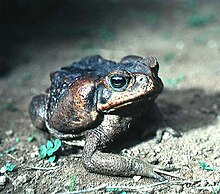The green anaconda (Eunectes murinus) is a species of snake found in South American rainforests, swamps, marshes and slow moving streams. It's numbers is not known, but few populations are declining due to habitat destruction and hunting for skin.
Physical Features
The green anaconda is one of the most heaviest snakes, reaching a weight of almost 230 kilograms. Females are bigger than males, the biggest one being about 29 feet. These reptiles have an average length of 17 to 20 feet. Their over all body color is olive green with black blotches on it. Their are reports of 40 feet anacondas, but such claims have not been validated.
Their is an award of $50,000 for anyone who can catch a 35 feet or more long anaconda. Its head is narrow compared to the body and has an orange and a yellow stripe on either side. Its eyes are on top of its head so that they can see above the water without exposing their body.
Distribution
They are found in the Amazon and other countries east of the of the Andes like Colombia, Ecuador, Bolivia, Brazil, Peru, the Guineas, Venezuela and the island of Trinidad. It is also found in the Orinoco basin.
Diet
The green anaconda can overpower and almost eat anything compared to their size. Generally , they eat small mammals, reptiles and fishes. But, large ones prey on huge mammals like capybaras, tapirs, jaguars and some reptiles like caimans and smaller anacondas. They kill their prey by constricting. They suffocate their prey and sometimes even stop their victim's heart beat.
Other names
The other names for green anaconda is the water boa, common anaconda or simply anaconda. They are locally known as 'mata-toro' which means 'bull killer'. This local name is used in South America and it is a Spanish term.
Source of picture 1:http://www.amazonlodges.net/pg























